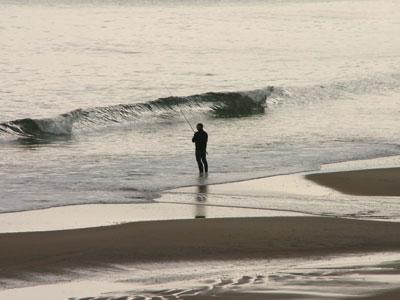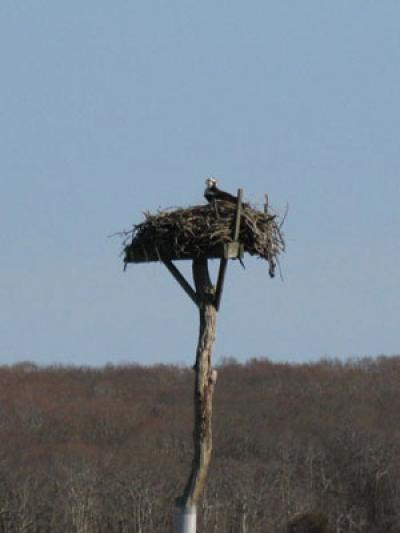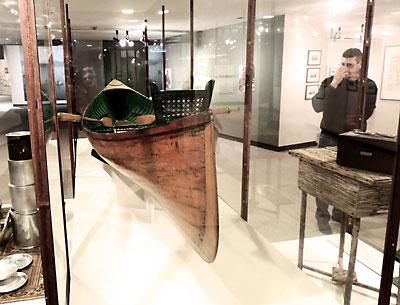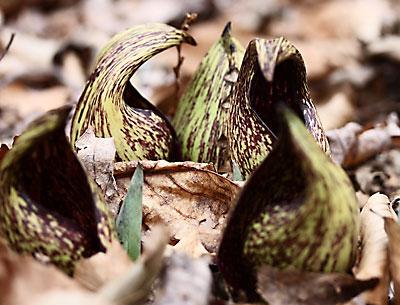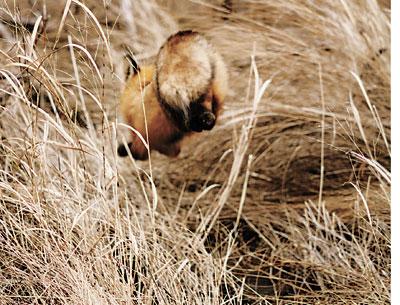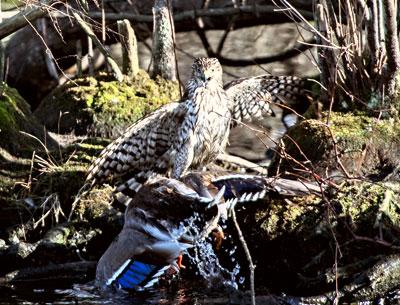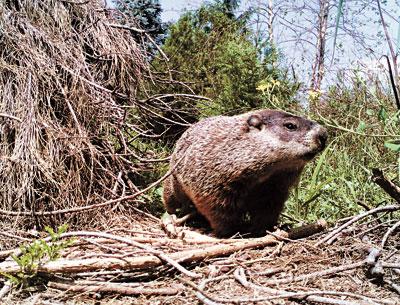ON THE WATER: Tom Turkeys on My Trail on Flamingo
ON THE WATER: Tom Turkeys on My Trail on Flamingo
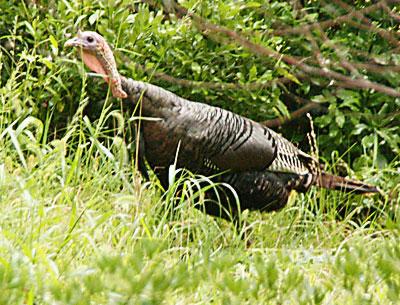
So, there I was driving down the hill on Flamingo Avenue toward the Montauk Firehouse early in the morning last week. Up ahead on the other side of the road was a jogger at the start of her climb. Whoa! What’s that behind her?
I slowed as I approached the jogger, who kept looking over her right shoulder and picking up her pace despite the challenging incline. She looked worried, and now I could see why. Two big tom turkeys in full-blown mating-season fledge — like the gobbler on a box of Bell’s stuffing seasoning — were closing in fast. The hen, for whose affections they were vying, looked on from the shoulder of Flamingo like Guinevere before some prehistoric test.
In the seconds it took me to don my cape and fly into action, I realized the scene mirrored the one in “Jurassic Park” where the velociraptors come after the little girl. Turkeys are dinosaurs, of course, 70 million years removed but still armed with the same eviscerating claws on their three-toed feet. The jogger realized she could not outrun the raptors and began to panic.
I pulled over and ran at the birds, flailing my arms. They laughed — or gobbled the equivalent — stopping their advance long enough for the jogger to get to cross the road and skedaddle back down the hill.
The turkeys started for me. I headed for the safety of my car with the birds hot on my trail. They were in the middle of the road coming on strong when their advance was interrupted — deus ex big machina — by a slow-moving Cadillac Escalade that came between me and a confrontation of the Cretaceous kind.
Undaunted by its tyrannosauric size and obvious power, the raptors took off after the Escalade. The distraction allowed the jogger, me, and the hen to escape, although I think she must surely have been impressed by the pluck of her suitors.
Benjamin Franklin wanted the wild turkey to be the country’s official bird. Hmm.
What this has to do with fish is this: Turkeys are birds in heat this time of year, as are ospreys. Four of the fish hawks were busy building their nests on Napeague over the weekend. One observer thought he saw one enjoying an alewife for lunch atop a telephone pole. Alewives, members of the herring family, are among the first fish to arrive on their spring migrations, and as with turkeys, and ospreys, they arrive bent on reproduction.
Oily alewives are just what bluefish and striped bass need after their long swim here from parts south and west. Alewives are usually first seen farther west in the Peconic Estuary, moving up the tributaries whose scent was imprinted on them as fry.
Over the years the alewives’ accesses to breeding streams have been blocked off by narrow and/or crumbling culverts. East Hampton has been attempting to clear their ancient pathways, but the effort is stalled.
In the days before the state outlawed the ocean seine, local baymen made their first sets on or about Easter, usually midmonth. Harvey Bennett of the Tackle Shop in Amagansett said on Tuesday he had no doubt that some striped bass had already arrived. “They’re here, but they’re not eating.”

